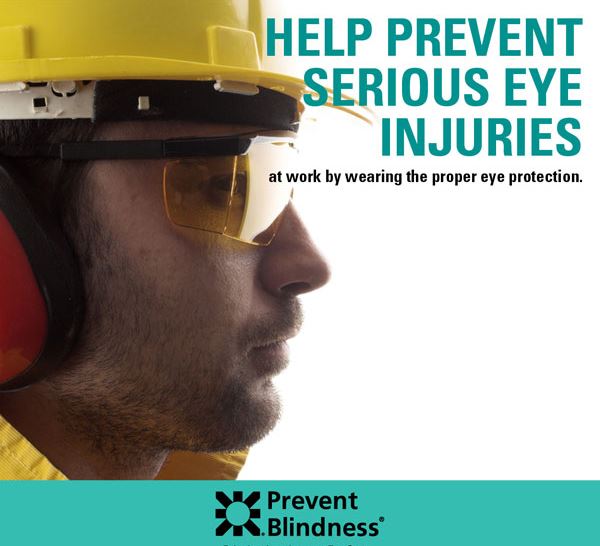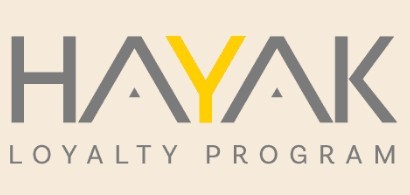Safety Glasses: Protecting Your Eyes At Work

Eye injuries in the workplace are more common than many of us may think, especially in work environments where potential eye hazards are present. That’s why experts and eye doctors recommend wearing the right eye protection to prevent common eye injuries in the workplace. In addition, the Occupational Safety and Health Administration (OSHA) requires employers to provide protective eyewear when employees are exposed to flying particles, molten metal, liquid chemicals, acids or caustic liquids, chemical gases, vapors, and light radiation. Same standards are applicable in U.A.E.

Safety Eyewear Protects Against a Myriad of Hazards
Hazards involve any potential danger or risk, which exist in workplaces, at home, and during recreation. These threats include physical, chemical and biological hazards.
Eye Hazards exist in every workplace, but some jobs have a higher risk than others.
- More than 40% of workplace eye injuries take place among craft workers such as plumbers, repairers, carpenters, and mechanics.
- Around 33% happen among equipment operators, such as assemblers and sanders.
- Of the total number of injuries, almost half took place in manufacturing.
- Just over 20% happened in construction.
What Are Safety Glasses
Although safety glasses may look like normal eyewear, they’re designed to provide significantly more eye protection by featuring frames and lenses that are much stronger than regular eyeglasses. Typically, safety lenses are available in impact-resistant polycarbonate and Trivex™ materials. While both lens types must meet or exceed the minimum requirements for protecting your eyes, polycarbonate lenses provide the highest level of protection from impact.
In order to be certified as safety glasses, they must meet the standards of the American National Standards Institute (ANSI). ANSI Z87.1 was created to protect eyewear users from hazards such as impact, optical radiation, liquid splash, dust, and fine particles. This standard covers all types of protector configurations, including eye glasses, safety goggles, face shields, welding goggles, welding masks, and more. (To know if your safety glasses meet the standards, look for the Z87 mark on the lens or frame.)


Types of Safety Glasses
There are several different kinds of safety glasses and each one provides a different layer of protection. The type of safety glasses a person should wear depends on the hazards in your workplace. For example, if you are working in an area that has particles, flying objects, or dust, you want safety glasses with side protection called side shields. A person who works with chemicals should wear goggles that protect all the way around their eyes. Below is a breakdown of the most commonly worn safety glasses:
1) Prescription Glasses with side shields: allow for a custom Rx while providing necessary side protection. We carry Metal and Plastic Safety frames with permanent or removable side shields.2) Goggles: wrap-around eyewear that provides a secure shield and protects against hazards coming from any direction. These may come with or without prescription options. We carry safety goggles for sports and workplace
3) Face Shields: maximum protection from exposure to chemicals, heat, or blood-borne pathogens. They should be used in conjunction with safety glasses or goggles, so that the eyes are protected when the shield is lifted.
Protecting Your Eyes With Rouhani Opticals
Rouhani Opticals currently sells certified safety glasses that are durable, lightweight, flexible and popular for comfort and fit. Our Safety prescription Frames, goggles, and sunglasses are certified according to the highest global standards for protective eyewear, ie ANSI Z87.1. We guarantee our products and the safety of your eyes.
What Are The General Requirements For ANSI Z87.1?
Since most people have never read the ANSI Z87.1 document, they may not fully understand what this certification covers. The ANSI Z87.1 certification helps in this effort by providing a certification system organized based on encountered hazards. This standard means the choice of safety eyewear revolves around what best represents the protection needed for the specific hazards encountered in the workplace.
The most common hazards include:
- Blunt impact
- Radiation
- Splashes and droplets
- Dust
- Small dust particles
Most safety eyewear manufacturers now provide packaging and product information revolving around how products meet these standards. Note that prescription safety lenses are also allowed under this standard. Previously, they had to be a certain thickness, but thinner prescription lenses are now allowed if they meet high-impact testing requirements.
Our Kids Safety Glasses are designed for optimal comfort and durability. Crafted from a single piece of soft, flexible TR90 plastic, there are no hinges or metal parts, and they come with an adjustable, detachable strap keeps the glasses securely in place.
We also offer a range of lenses, including polycarbonate, that can be used for safety and high-impact activities. Visit our online store to determine which lens is best for you based on your prescription, frame type, and lifestyle.
The Benefits of Safety Eyewear Go Beyond Safety
The choices in safety eyewear abound with various frame styles and lens colors. Safety eyewear exists for everyone from motorcycle riders and athletes to construction workers and welders. In addition to preventing most eye injuries, the benefits of safety eyewear go beyond protection from everyday hazards.
With the right lens choice, safety eyewear can also enhance vision and help a person see clearly. Lens options ranging from anti-fog to a variety of lens tints increase comfort and convenience for many different conditions.
No Valid Excuse
Poor fashion and discomfort are no longer valid excuses for not wearing protective eyewear. Today’s established safety standards, expert advice and the variety of brands make choosing safety eyewear easier than ever.
Considering all the facts, there is just no good excuse for not wearing safety eyewear. Whether at work, home or outdoors, you should always protect your vision. The bottom line is that your eyesight is irreplaceable, and the best way to preserve your vision is to safeguard it.






Comments
My favorite part of this article is the importance of different layers of protection for your safety glasses' function and effectiveness. My best friend told me last night that he was looking for a solution spray for the safety purpose when using eyeglasses, and he asked if I had any idea what would be the best option to consider. Thanks for helping me understand the advantage of protecting your eyes, I'll be sure to tell him that he can try the anti-fog spray. http://C-ClearAntiFog.com/anti-fog-for-safety-glasses-s/151.htm